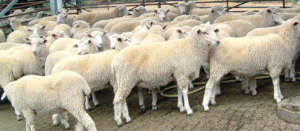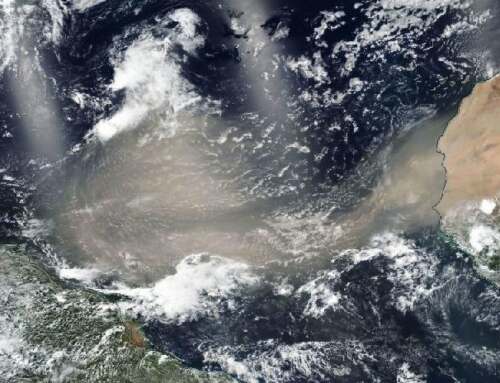Intensive livestock farming’s effect on air quality
 Pinpointing the cause of poor air quality can be difficult at times – leading to unnecessarily prolonged exposure to hazardous pollutants for workers, neighbours and the environment. In this expert series, we take a closer look at specific industries and some of the more common contaminants that could affect the air in your workplace or home, as well as treatment strategies to deal with it.
Pinpointing the cause of poor air quality can be difficult at times – leading to unnecessarily prolonged exposure to hazardous pollutants for workers, neighbours and the environment. In this expert series, we take a closer look at specific industries and some of the more common contaminants that could affect the air in your workplace or home, as well as treatment strategies to deal with it.
Greenhouse Gases
The headlining air quality topic in livestock farming is the emission of greenhouse gasses. With climate change dominating the global conversation, it is important for farms to be aware of the resultant air quality from their emissions, as well as which sources may need improvement.
Approximately 10% of Australia’s total greenhouse emissions are estimated to come from livestock with additional emissions associated to farm activities like producing feed (Henry, Charmley, Eckard, Gaughan, & Hegarty, 2012). Rather than carbon dioxide (CO2), the main culprits contributing to the nation’s greenhouse gas emissions from livestock are methane and nitrous oxide (N2O). These gasses also have a much greater potential for anthropogenic climate change than CO2 (Australian Department of Agriculture, Water and the Environment, 2019). Methane is a by-product of the digestion processes present in ruminant animals such as cattle. It is also present in the manure of poultry and swine if left in large piles to ferment. NO2 is also emitted primarily from animal excrement. Nitrates from fertiliser, manure, urine and other indirect sources undergo a process of denitrification to form N2O.
Ruminants, or cud chewing animals, excrete 75-95% of the nitrogen that they ingest, so efforts must be made to limit the warm anaerobic conditions that encourage denitrification (de Klein & Eckard, 2008). A promising greenhouse gas mitigation strategy to explore is changes to animal diet. Examples include introducing dietary oils to suppress enteric methane (Beauchemin, Kreuzer, F., & McAllister, 2008) or streamlining nutrient balance to limit excess nitrogen in manure (Henry, Charmley, Eckard, Gaughan, & Hegarty, 2012).
With more research in this field, new technologies and farm management strategies can further reduce the greenhouse gas footprint of intensive livestock farming.
Odour
A more immediately noticeable emission from the manure, urine and sweat of livestock is its unpleasant odour. Odour from manure is made up of more than 150 compounds, making it difficult to characterise and maintain (Alberta Agriculture and Food, 2008).
If you have been following this series, you will be familiar with the common odour producing gases hydrogen sulphide (H2S) and ammonia (NH3). In intensive livestock farms, the toxic ‘rotten egg’ gas, H2S, is found in outdoor holding storage tanks, earthen manure storage facilities or shallow barn gutters. It is easily detected with the right equipment and should be removed as soon as possible.
NH3 is much trickier to isolate. It is formed primarily when the compound urea (from urine) is broken down by the enzyme urease (from faeces). Not only does it produce a pungent odour, but if NH3 escapes the manure, its nutrient value as fertiliser decreases. Environmental conditions such as wind speed and humidity can affect odour generation as well (Bottcher, 2001). These must be considered when employing management strategies.
Keeping buildings dry and well ventilated as well as minimising liquid manure surface areas are excellent preventative measures. An effective manure management system is also crucial to minimising intensive farming’s odorous emissions. Frequent removal of manure from static pits can significantly reduce the development of H2S. Physical, chemical and biological treatment of stored manure can limit the release of NH3. Additives and oil sprinkling, pH control or keeping urine and faeces separate are all methods that can partially reduce odour.
Organic Dust
More serious than nuisance ambient odour is the potential for respiratory health hazards caused by organic dust. Particles in the 10 or 2.5 micron diameter category can be drawn deep into the lungs and remain trapped there, impacting human and animal health (Australian Department of Agriculture, Water and the Environment, 2019).
As opposed to household dust, the dust in livestock farms can contain many unique unpleasant compounds. Feed components, dried faecal matter, dander, mould, pollen, grains, mites, insect parts, litter and feathers are all things that the human body would rather not have present in its respiratory system (Bottcher, 2001). Dust is also an excellent carrier of bacteria and viruses (Collins & Algers, 1986).
Farm workers with prolonged exposure to organic livestock dust are at risk of contracting several respiratory infections. These include Chronic Farmer Lung Disease, Organic Dust Toxic Syndrome, Bronchitis and Occupational Asthma (Alberta Agriculture and Food, 2008). High levels of dust exposure can also be a concern for the animals. Pulmonary diseases can spread quickly in intensive systems and sick livestock will hinder the farm’s product quality (Collins & Algers, 1986).
Dust can be controlled by minimising the occurrence of fine particles or by preventing them from forming clouds by introducing additives such as oils to dry feed. Providing workers with dust masks and using air cleaning devices such as ionizers are also highly recommended to provide adequate respiratory safety.
These air quality issues are never isolated. For example, gasses and volatile odorants can adhere to dust particles. It follows that taking steps to remove the dust in intensive livestock facilities can also reduce the odour. Manure management and dietary adjustments will reduce greenhouse gas emissions as well as ammonia and other odorants. Most importantly, for the safety of the respiratory systems of both the workers and animals present, farm air quality should always be maintained to a high standard. By investing in feeding programs, innovative waste systems and frequent ambient air monitoring, intensive livestock farming can further reduce its environmental impact. Likewise, as technology and methods improve, it will only become easier to keep farm air invigorating and fresh.
References and Further Reading
Alberta Agriculture and Food. (2008). A Primer on Livestock Air Quality. Edmonton: Government of Alberta, Canada.
Australian Department of Agriculture, Water and the Environment. (2019, November 4). Livestock Emissions. Retrieved from Australian Government: Department of Agriculture, Water and the Environment.
Australian Department of Agriculture, Water and the Environment. (2019, February 1). Particulate Matter. Retrieved from National Pollutant Inventory.
Beauchemin, K. A., Kreuzer, M., F., O., & McAllister, T. A. (2008). Nutritional management for enteric methane abatement: a review. Australian Journal of Experimental Agriculture, 21-27.
Bottcher, R. W. (2001). An Environmental Nuisance: Odor Concentrated and Transported by Dust. Chemical Senses, 327-331.
Collins, M., & Algers, B. (1986). Effects of Stable Dust on Farm Animals – A Review. Veterinary Research Comunications, 4150428.
de Klein, C. A., & Eckard, R. J. (2008). Targeted technologies for nitrous oxide abatement from animal agriculture. Australian Journal of Experimental Agriculture, 14-20.
Henry, B., & Eckard, R. (2009). Greenhouse gas missions in livestock production systems. Tropical Grasslands, 1-7.
Henry, B., Charmley, E., Eckard, R., Gaughan, J., & Hegarty, R. (2012). Livestock production in a changing climate: adaptation and mitigation research in Australia. Crop & Pasture Science, 191-202.
Senate Select Committee on Animal Welfare. (1990). Intensive Livestock Production. Canberra: The Parliament of the Commonwealth of Australia.











